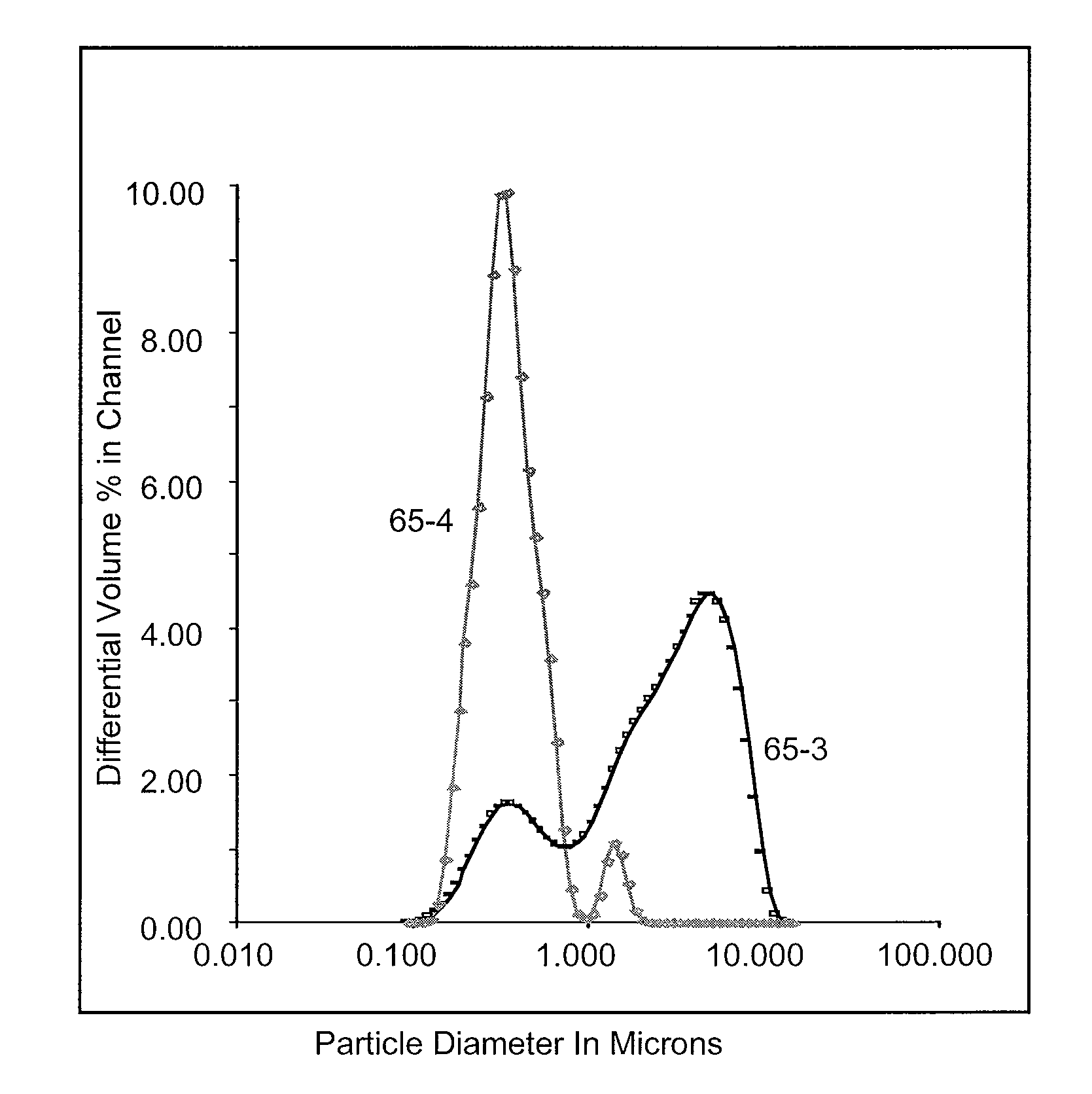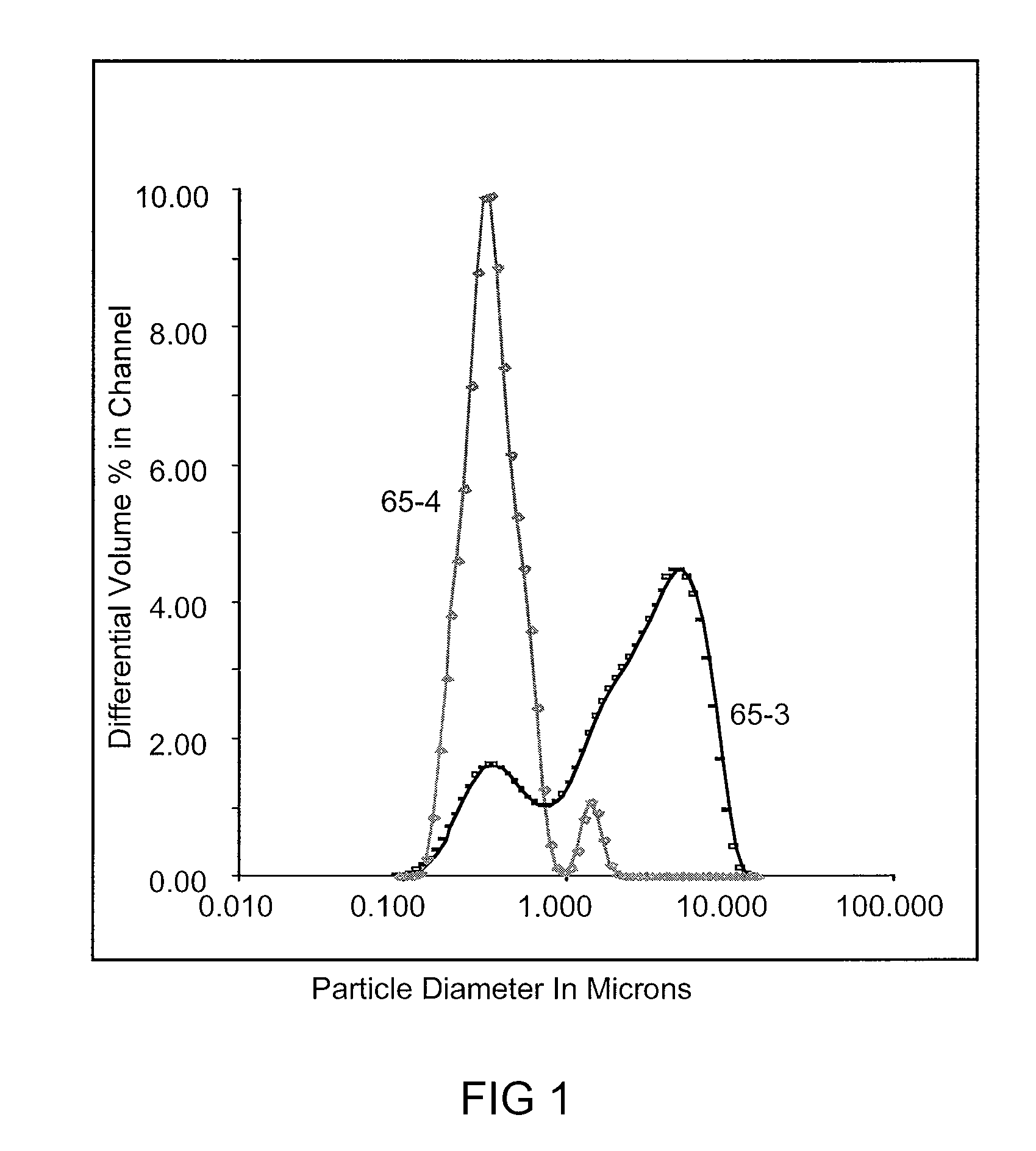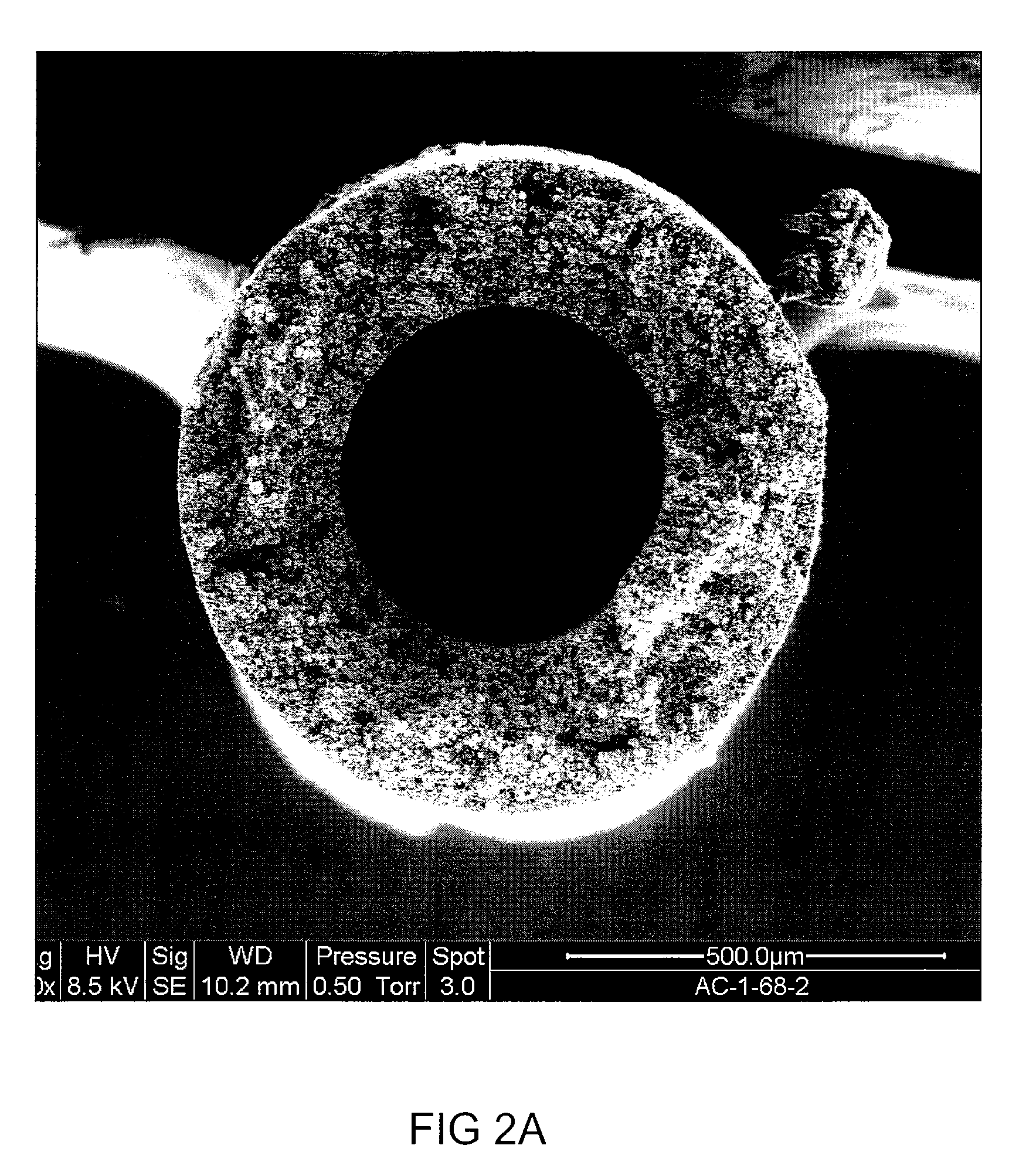Hollow Organic/Inorganic Composite Fibers, Sintered Fibers, Methods of Making Such Fibers, Gas Separation Modules Incorporating Such Fibers, and Methods of Using Such Modules
a composite fiber and organic/inorganic technology, applied in the field of polymeric/inorganic hollow fibers, sintered fibers, gas separation modules incorporating hollow or sintered fibers, and methods of using gas separation modules, can solve the problems of limited commercial success, inability to adapt polymeric membranes, inorganic or ceramic membranes, etc., and achieve the effect of facilitating phase inversion
- Summary
- Abstract
- Description
- Claims
- Application Information
AI Technical Summary
Problems solved by technology
Method used
Image
Examples
example 1
[0229]A solution containing 70 wt % attrition milled perovskite (with a dispersing agent of Phospholane PE 169) and 7.3 wt % Lycra L-162 containing ˜90 wt % polyurethane soft segments in DMAC was prepared in the high shear mixer as described in Example 1. The polymeric / inorganic suspension was metered into a spinneret having fiber channel dimensions OD / ID=1524 / 711 microns at rate of 150 cc / hr at 70° C. A bore fluid containing 25 volume % NMP in water was metered into the bore of the fiber at a rate of 75 cc / hr. The fiber traversed an air-gap length of 1 cm and was coagulated in a water bath maintained at 16° C. The fiber could traverse the under-water fiber guides and be collected on a take-up roll at a speed of about 5 meters / min. Unlike the glassy PES binder counterpart the use of rubbery block copolymer as the binder enabled demonstration of continuous spinnability. The fibers were washed and dried as described in Example 1. The dried fiber exhibited improved ductility as compare...
example 2
[0230]A solution containing 60 wt % attrition milled perovskite and 7.3 wt % Elastollan 1180A10 in NMP was prepared in the high shear mixer as described in Example 1. Elastollan 1180A10 is a polyether-based thermoplastic polyurethane block copolymer available from BASF corporation. The soft segments are thought to be based on the reaction of hydroxyl terminated 1,4-polybutylene glycol with 4,4′-methylenebis(phenyl)socyanate) and the hard segments are thought to be based on the reaction of butanediol with 4,4′-methylenebis(phenyl)socyanate). It is a rubbery block copolymer containing about 15 wt % hard segments.
[0231]The ceramic suspension was metered into a spinneret having fiber channel dimensions OD / ID=1524 / 711 microns at rate of 135 cc / hr at 40° C. A bore fluid of pure water was metered into the bore of the fiber at a rate of 83 cc / hr. The fiber traversed an air-gap length of 1 cm and was coagulated in a water bath maintained at 20° C. The fiber could traverse the under-water fib...
example 3
[0233]A solution containing 60 wt % attrition milled perovskite and 7.3 wt % Estane 5708 in NMP was prepared in the high shear mixer as described in Example 1. Estane 5708 is a polyester-based thermoplastic polyurethane block copolymer available from the Lubrizol Corporation. The soft segments are thought to be a polyester derived from polycondensation of adipic acid and butanediol. The hard segments are thought to be based on the reaction of butanediol with 4,4′-methylenebis(phenyl)socyanate). It is a rubbery block copolymer containing about 85 to 90 wt % soft segments with a glass transition temperature Tg of −33° C.
[0234]The ceramic suspension was metered into a spinneret having fiber channel dimensions OD / ID=1524 / 711 microns at rate of 150 cc / hr at 32° C. A bore fluid containing 75% volume water and 25% volume NMP was metered into the bore of the fiber at a rate of 75 cc / hr. The fiber traversed an air-gap length of 1 cm and was coagulated in a water bath maintained at 6° C. The ...
PUM
| Property | Measurement | Unit |
|---|---|---|
| diameter | aaaaa | aaaaa |
| weight % | aaaaa | aaaaa |
| diameter | aaaaa | aaaaa |
Abstract
Description
Claims
Application Information
 Login to View More
Login to View More - R&D
- Intellectual Property
- Life Sciences
- Materials
- Tech Scout
- Unparalleled Data Quality
- Higher Quality Content
- 60% Fewer Hallucinations
Browse by: Latest US Patents, China's latest patents, Technical Efficacy Thesaurus, Application Domain, Technology Topic, Popular Technical Reports.
© 2025 PatSnap. All rights reserved.Legal|Privacy policy|Modern Slavery Act Transparency Statement|Sitemap|About US| Contact US: help@patsnap.com



